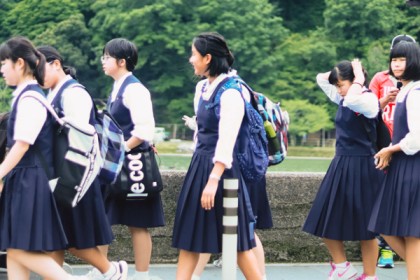Table of Contents
Describe An Activity That You Remember Enjoying Most In Your Primary School

Cue Card
You should say:
- What the activity was
- How often you did the activity
- Who you did it with
- And explain why you enjoyed doing it
Sample Answer 1
One of the most interesting and enjoyable activities from my primary school years was the biannual school trips, known as spring and autumn outings. We had these outings once every semester, and they were events that everyone eagerly looked forward to.
The activity involved traveling to various destinations with my classmates, especially those I was close to. It was a much-anticipated break from the usual classroom routine. These trips were unique because, for a day, our usual school roles and routines were set aside. We didn’t have regular classes, and the emphasis was on exploration and fun.
What made these outings so enjoyable was the sense of freedom and the opportunity to bond with classmates outside the classroom. We would bring a variety of snacks and share them with each other, which was always a highlight. Sharing food seemed to bring us closer together, and there was an air of excitement and camaraderie that you don’t usually find in a classroom setting.
Another reason I cherished these outings was the sheer joy of being outdoors and exploring new places. Whether it was a park, a museum, or a historical site, each destination offered new experiences and learning opportunities that were far more engaging than the usual textbook learning.
These outings also fostered a sense of independence. We had to manage our own belongings, follow a schedule, and often, make decisions as a group. It was an early lesson in responsibility, teamwork, and cooperation, all wrapped up in an enjoyable and memorable experience.
Sample Answer 2
One of my fondest memories from my primary school days is participating in the school’s annual sports day. This event took place once a year and brought together students, teachers, and parents for a day filled with various sports and recreational activities.
Sports day was a highly anticipated event, and it included a range of competitions such as relay races, sack races, and tug-of-war. The whole school would come together, divided into different teams, each representing a specific color or theme. The activities were not only competitive but also focused on fostering teamwork, camaraderie, and a sense of school spirit.
1 participated in sports day every year during my primary school, and it was a highlight of the academic calendar. The excitement of preparing for the event, practicing with teammates, and the lively atmosphere on the actual day made it a cherished experience. The joy of cheering for our team, the friendly competition, and the shared sense of accomplishment created lasting memories.
I did this activity with all my classmates and teachers. The entire school was actively involved, making it a collective effort to ensure the success of our team. The collaborative nature of the event helped strengthen bonds among students, teachers, and even parents who attended to support their children.
Sports day was my favorite activity in primary school because it combined elements of fun, competition, and teamwork, it allowed me to showcase my athletic abilities, learn the value of teamwork, and experience the thrill of friendly competition, Moreover, the event promoted a healthy and active lifestyle among students, fostering a sense of pride and unity within the school community. The memories of those sports days continue to bring a smile to my face, making it a truly enjoyable and unforgettable experience from my primary school years.
Part 3
1. What activities do children often do in your country?
In my country, children engage in a variety of activities, both indoors and outdoors. Outdoor activities often include playing sports such as soccer, cricket, or badminton in local parks or playgrounds. Additionally, children frequently participate in cultural activities like dance or music lessons, and some are involved in scouting or other community-based programs. Indoors, activities may involve playing video. games, reading, or engaging in creative pursuits such as drawing or crafting.
2. At what time do children often have activities?
As I know, the timing of children’s activities can vary. Most of the activities take place after school hours, they may be scheduled on weekends or during school holidays, such as school trips or competitions, while some may be in school hours as in the curriculum, like physical classes. It ultimately depends on the nature of the activity.
3. What are the differences between activities at home and at school?
Activities at home and school serve different purposes in a child’s development.
At school, activities are often structured and designed to align with the curriculum, promoting academic learning, teamwork, and discipline. These may include
classroom lessons, group projects, and organized sports. On the other hand, activities at home are more diverse and can be tailored to the child’s individual interests. They may include hobbies, family outings, and unstructured playtime, providing a balance between education and leisure.
Moreover, at school, children often engage with a larger peer group, fostering social skills and a sense of community. At home, activities may involve family members, promoting close bonds and shared experiences. The difference lies in the setting and the specific objectives of the activities, with school focusing more on formal education and socialization, while home activities cater to a broader spectrum of personal interests and family dynamics.
In summary, children in my country participate in a range of activities, both at home and at school, with parents emphasizing a balanced approach to promote holistic development. Activities at school and home serve distinct purposes, contributing to a well-rounded upbringing for children.
4. Why do some people like to participate in activities?
People have a wide range of motivations for participating in activities. These motivations can include seeking personal enjoyment, enhancing their skills, engaging in social interactions, and seeking a sense of accomplishment. By engaging in activities, individuals are able to not only pursue their interests but also expand their knowledge and acquire valuable skills that can benefit them in various aspects of life. Most importantly, activities with others can full-fill people’s social needs.
5. What activities do people do in their free time?
During their free time, people engage in a variety of activities. Some enjoy hobbies like reading, painting, cooking, or jamming on musical instruments. Others might get into sports, go for outdoor adventures, hang out with friends and family, or pursue their own interests.
6. Does technology affect children’s activities? If so, how?
As I know, technology has affected children’s activities in both recreationally and educationally. Children these days have so many digital entertainment options like video games, streaming platforms, and online videos. While these can be fun and help them unwind, spending too much time on screens can affect their other activities like outdoor sports with friends. In addition to recreation, there are many educational apps and learning platforms specifically designed for children. These tools can make learning more fun and interactive, allowing kids to develop new skills while having a great time.
Some IELTS Speaking part 2 cue-cards you may like :
- IELTS Speaking Part 1 From January to April 2024
- IELTS Speaking Part 2 From January to April 2024
- (2024) Describe a Time When Someone Who Did Quite Well In a Team (e.g Schoolwork or a Community)
- (2024) Describe a Long-Term Goal You Would Like To Achieve
- (2024) Describe a Person Who Is Good At Making People Feel Welcome In His/Her Home
- (2024) Describe Something You do To Help You Work Or Study
- (2024) Describe a Job That you Do Not Like To Do In The Future
Credits
Image : Photo by Stephanie Hau on Unsplash


